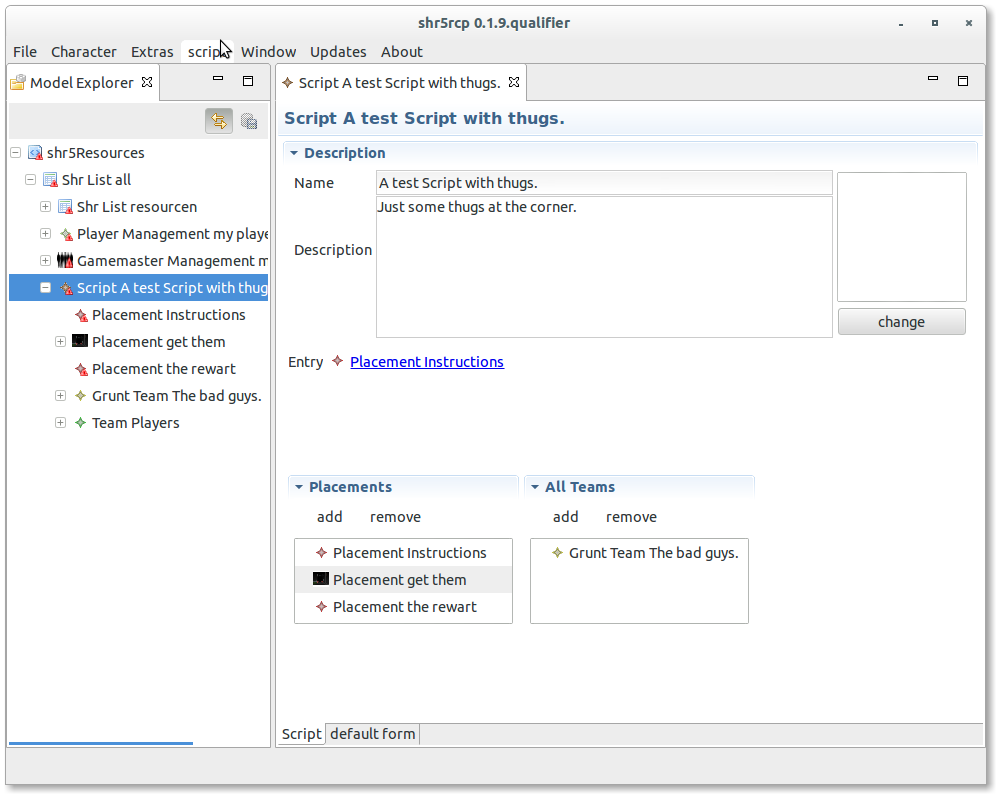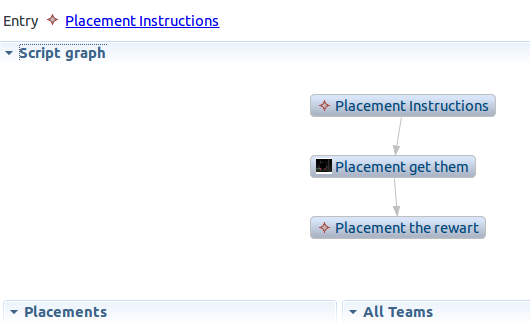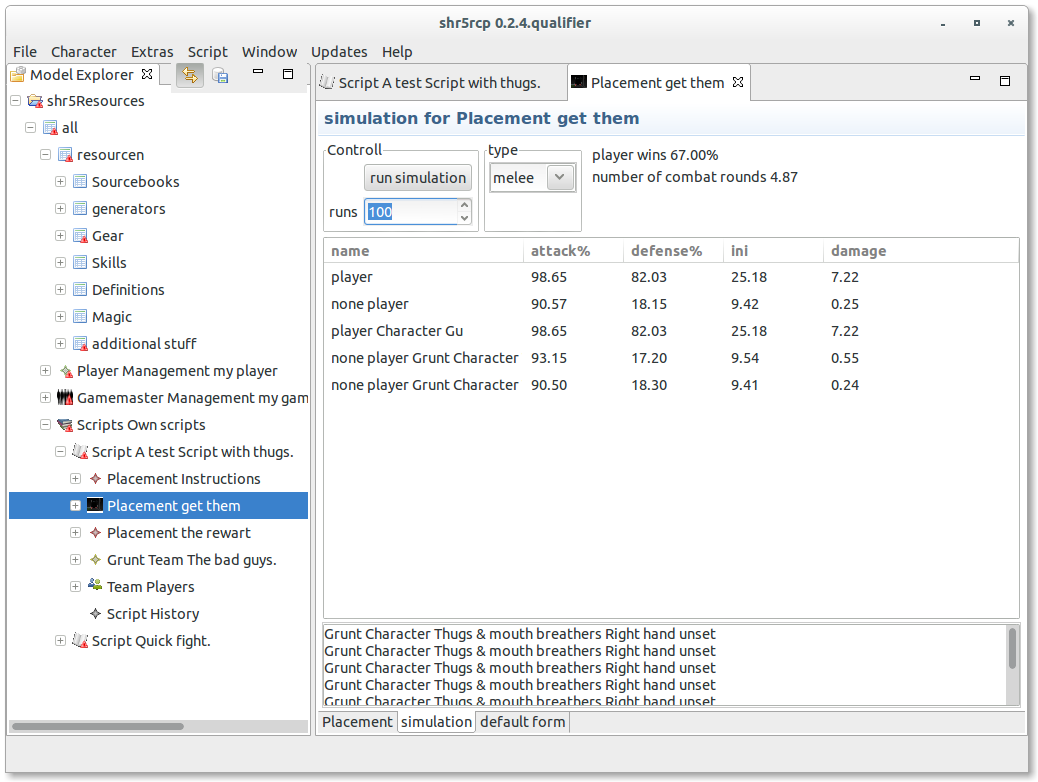-
Notifications
You must be signed in to change notification settings - Fork 9
script editing
A script is the story it contains several placements, and all information like nsc. The placements are linked together and forms a net or graph. The story net, as a rgp is not as linear as a book.

You can open a script in the model viewer as it is an object like all other objects, you can also use the "open script" menu which open a selection dialog with all available scripts.
The script is a describable holding the name and and image. The script object also contains the history while playing. Also the script defines the entry point, the first placement. Normally a kind of instruction. "Let the games begin." The placement graph is displayed to gives you a simple overview over the different placements/scenes and how there are connected.


There is a simple script printer to print out the script.

The player group is a special group as it will be available in every placement. It need to be empty when you build a script, as it will contains the characters representing players.
The groups holding different characters together, groups can be part of placements, which means this characters plays a role in this placement. All managed characters will be wrapped to runtime Characters, a runtime Character has some related properties like right and left hand, inventory or armor. All these properties are used for example in the combat view to have the data for the most tests. The in use is a subset of the character inventory and represent the items the character is currently carries. You can take the things of the inventory in the hand and use it.

The gamemaster container is used to store the characters you need for the groups, all the npc should be created here as the script should be "self containing". When you want to share your script it is necessary that all referenced objects are included, otherwise there will be missing on the import, of course.
A placement is an isolate scene in the story. Like in the rpg adventures it contains the sections background, inTheirFace and debugging to describe the placement to the game master. You move to the story when you move thru the placmenets, each placement can be connected to other placements.

All possible placements are collected in the next placement feature. As the placement describes the Space/time of the rpg it has a time range where you can define the start and end date for this placement.
You can test a placement in a simple combat simulation, where a simple melee or a simple ranged combat take place. This simulator uses the implemented runtime to do the dice rolling.
